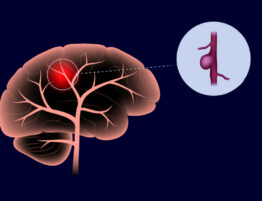This ailment is often called CTS. The problem is a typical and often debilitating disease. It affects millions of people around the world. It primarily affects the hands and wrists. It causes several disturbing markers that prevent a person from performing everyday tasks. Compression of the median nerve is associated with this сondition. It pinches the nerve as it passes through the wrist canal, a narrow passage in the wrist.
It is essential to understand all the subtleties of carpal tunnel syndrome to treat it in time. Understanding the complexity of CTS is critical for those at risk. People can effectively manage and alleviate the discomfort it brings. This, in turn, can significantly affect the quality of their life.
Understanding Carpal Tunnel Syndrome
CTS is a typical and often painful condition that affects the hand and wrist. Pressing of the middle nerve, which runs from the forearm to the hand, occurs when it passes through a narrow passage in the wrist. This compression can lead to a variety of manifestations and discomfort. It is essential to gain a complete understanding of this condition.
Carpal tunnel syndrome means :
- Anatomy. The wrist canal is a narrow tunnel-like structure. It is formed by the carpal bones of the wrist and a strong band of connective tissue. Several structures coexist in this canal. These include tendons and the median nerve.
- Reasons. CTS can develop due to several factors. The most common factors are repetitive motions of the hands and wrists and prolonged bending or extension. Hormonal changes, underlying sickness, and genetic predisposition are also reasons.
- Symptoms. People with CTS often experience a range of signs. Among the main ones are numbness in index finger and thumb. They may also experience weakness, pain, or a tingling sensation. These manifestations are often more pronounced during activities that involve bending or extending the wrist.
- Diagnostics. Diagnosing CTS usually involves a combination of medical history, physical examination, and special tests. Among the tests, doctors conduct nerve conduction studies and electromyography (EMG). The doctor will use these tools to confirm the presence of the сondition.
- Treatment options. Depending on the severity of the condition, approaches to treatment may differ. Patients can manage mild cases with lifestyle changes, splinting, and anti-inflammatory medications. More severe cases may require corticosteroid injections or surgery.
- Prevention and management. Preventative strategies include ergonomic workplace adjustments, breaks from repetitive tasks, and wrist exercises. Proper treatment of underlying conditions can also help reduce the risk of developing CTS.
Therefore, understanding the causes, markers, diagnosis, treatment options, and preventive measures is essential for those affected by or at risk of developing CTS.

Causes of Carpal Tunnel Syndrome
The middle nerve injury сondition occurs when the nerve is compressed. Various factors can cause pressing, and it is more typical for female patients.
What is a carpal tunnel? This trauma is often chronic and occurs as a result of occupational activity. Pathology is typical for musicians who type a lot on the keyboard. It is also characteristic of those performing minor monotonous work with fingers.
Compression of the median nerve and disruption of its blood supply lead to degenerative changes. There is growth of connective tissue over a long period. The illness begins to develop when it disturbs perception, and neuropathic pain сondition appear. The course of the disease involves impaired motor function and movement disorders. But why does this happen?
Below, we present the causes of сarpal tunnel syndrome.
Menopause and hormonal changes
Hormonal fluctuations can affect the tissues and structures inside the wrist canal. This potentially increases the risk of nerve pressing.
Factors of inheritance
There is some evidence that genetic factors may play a role in the development of CTS. If members of your family have had CTS, you may be at increased risk.
Injuries caused by external triggers
Carpal tunnel syndrome means that a person often has some injuries. Traumatic injuries to the wrist can cause swelling and compression of the middle nerve. This contributes to the development of CTS.
Inflammatory pain in joints and ligaments
Rheumatoid arthritis and other inflammatory illnesses can cause inflammation in the wrist. This leads to swelling and pressure on the median nerve.
Tenosynovitis
Inflammation of the protective sheath (tenosynovium) around the tendons can increase the pressure inside the canal. This will potentially lead to CTS.
Benign or cancerous tumors
Tumors, benign or cancerous, in or around the wrist canal can put pressure on the middle nerve. This can cause manifestations of carpal tunnel syndrome, although this is rare.
Edema
General edema can occur due to obesity or fluid retention during pregnancy. This can put pressure on the median nerve in the carpal canal.
It is important to note that in many cases CTS is the result of a combination of these factors. If you suspect you have CTS, we recommend that you consult with a healthcare professional.
Warning Signs of Carpal Tunnel Syndrome
The illness begins with sharp and constant pain, inflammation, and tingling in the heel of the affected hand. Numbness is also manifested for a long time. Seizures usually occur at night. Clinical cases may describe painful lesions on the one hand, but the сondition may be bilateral. You can eliminate unpleasant sensations by rubbing the problem area and shaking your hands. However, such procedures are valid only for a short time.
As the illness progresses, it adds paresthesias and impairs motor function to the pain. At the same time, the patient feels numbness in index finger and thumb. pressing of the middle nerve leads to difficulty grasping objects with the thumb. There is also a violation of the bending of 1-3 fingers. This creates problems in everyday life and limits professional activity.
Additionally, cold hands, inflammatory sensitization, swelling, and redness accompany such autonomic disorders.
The potential patient must receive the correct diagnostic procedure to achieve a practical relief effect. Initial diagnostic actions are pretty simple. The doctor should tap in the area of the nerve of the hand. Clear pain reactions indicate canal syndrome. Passive hand movements provoke the development of unpleasant markers. Neurologists call this phenomenon Foville’s symptom.
The following examinations are performed to confirm the diagnosis:
- electromyography;
- radiography;
- computed tomography;
- MRI.
The above diagnostic methods help to obtain a reliable neurological diagnosis. It also helps to formulate a treatment plan for a positive outcome.
Conclusion
What is a carpal tunnel? In summary, CTS is a typical and often painful condition. It occurs due to compression of the median nerve in the wrist. Various factors can cause this pressing. The main factors are hormonal changes, genetic predisposition, injuries, and inflammatory conditions. As CTS progresses, it can lead to several troubling markers. The most common are pain, numbness, tingling, and impaired hand function.
Individuals can often manage mild cases with lifestyle changes, splinting, and anti-inflammatory medications. More severe cases may require surgical intervention. Early diagnosis and appropriate treatment are critical to the treatment of wrist tunnel syndrome. It is essential for people to consult a healthcare professional for proper evaluation. Contact Lone Star Neurology!
FAQ
- What causes carpal tunnel syndrome?
Carpal tunnel syndrome is primarily caused by compression of the median nerve. Common contributing factors include:
- repetitive movements of the hands and wrists,
- prolonged flexion or extension of the wrist,
- main ailments,
- hormonal changes
- genetic predisposition.
- What are the symptoms of carpal tunnel syndrome?
Symptoms of carpal tunnel syndrome usually include numbness or tingling in the thumb, index, and middle finger. Weakness, pain, or a tingling sensation may also occur.
- Which nerve is compressed in carpal tunnel syndrome?
Carpal tunnel syndrome involves compression of the median nerve. It is responsible for controlling sensation in the palm and fingers.
- How to prevent carpal tunnel syndrome?
You can prevent Carpal Tunnel Syndrome by :
- adjusting ergonomics at the workplace,
- taking regular breaks during repetitive tasks,
- practicing wrist exercises to maintain strength and flexibility.












Please, leave your review
Write a comment: